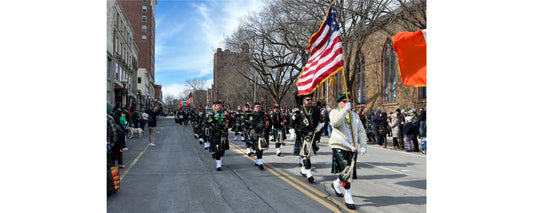Snow absorbs sound.
That’s one reason the world takes on a pleasing, preternatural quiet during and after snowfall. Sonic waves that would normally find ways into your ear canals never actually make it, stopped in their tracks by floating and fallen water puffs.
Last Saturday in downtown New Haven, a respectable snow muted the usual engine-roars and tire-treading of passing vehicles. The footfalls of Yale undergrads, racing to catch a shuttle to the train station, sounded like mere tiptoes, rolling suitcases reduced to whoosh-ing in tow. A shout-out from one guy down the street to his friend across the way registered as urgently as the patter of snowflakes hitting the back of my hat.
Snow reflects light.
This can lead to surreal nighttime experiences. After the sun dipped below the skyline that evening, the Green’s colorful Christmas tree lights and the many curved lanterns lining its pathways switched on, followed by nearby street lamps and the backlight of the City Hall clock tower. Lit-up window offices in the Connecticut Financial Center, City Hall and the First Niagara and Wells Fargo buildings dotted a far edge of the scene. At some point, bright spotlights, trained on the columns of the federal courthouse near the corner of Church and Chapel, flipped on.
sponsored by
The snow on the ground bounced the city’s light up into the atmosphere. Thick cloud cover, heavy enough to obscure a near-full moon, sent it back. The smooth matte sky had turned a little sepia, and the shimmering, no-longer-green Green was marbled with overlapping light sources and thin, trailing shadows of trees and lampposts. It was midnight, and you could see far into a strange, fantastical distance.
Snow creates space.
Hours before that midnight hour, the day’s mild but long-lasting snow had turned into a sleet that would persist well into Sunday morning, soon compelling all but the bravest adventurers to retreat indoors. This left even more of the cityscape to the few who dared stay out longer.
Being completely alone and unobserved in public spaces carries a peculiar feeling of liberation. You can treat that feeling seriously and contemplatively, or you can go the opposite way: laughing with abandon, trying on your goofiest facial expressions and generally doing the little insignificant things you wouldn’t dream of doing in view or earshot of other people.
Snow creates proximity, too.
Indoors on a snowy weekend, families, friends and couples make hot chocolate and cider and meals out of whatever’s in the fridge. They throw on comfort-movies and break out boardgames. They’ve got nowhere else to be, and the pressure’s off.
sponsored by
Outdoors, a certain kinship develops between strangers. You’ve got at least some of the same problems this day, and some of the same resilience. That goes for not-quite-strangers, too: all it takes is a pair of shovels and a little work ethic to get you and that neighbor you barely know talking.
For young families, snowy weather can bridge sometimes-frosty relationships. Back on the Green, a young sister and brother at prime bickering age found pure joy in the pure snow. And padding, too: the girl executed a terrific barrel-rolling back-flop just behind Center Church.
Snow provides focus.
…and not just because you can’t see very far when it’s really falling. The concerns snow presents—keeping warm, staying dry, avoiding slipping—aren’t abstract, far-off or intractable. They’re here, they’re now and they’re giving your forebrain a break.
Officially, snow is branded as “inclement,” but that characterization is itself inclement. It’s unfair treatment for such fair weather.
Written and photographed by Dan Mims.









